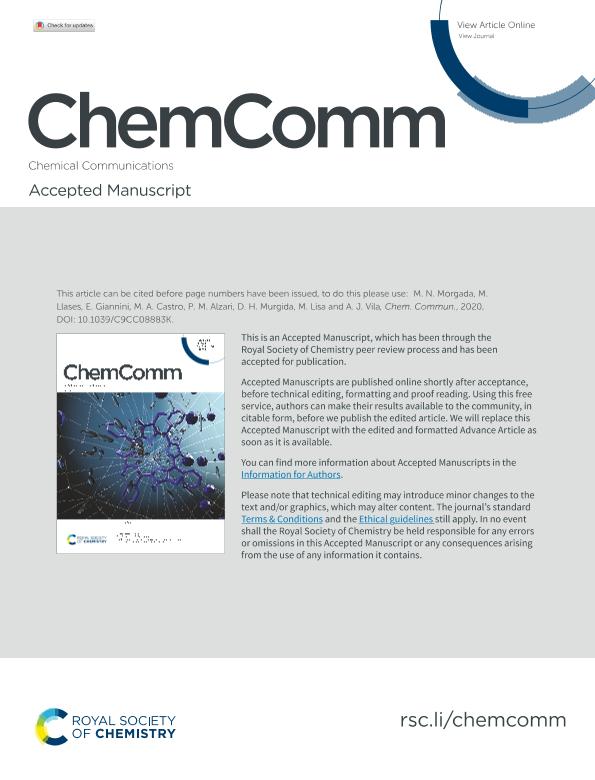Artículo
Unexpected electron spin density on the axial methionine ligand in CuA suggests its involvement in electron pathways
Morgada, Marcos Nicolás ; Llases, María Eugenia
; Llases, María Eugenia ; Giannini, Estefanía
; Giannini, Estefanía ; Castro, Maria Ana
; Castro, Maria Ana ; Alzari, Pedro M.; Murgida, Daniel Horacio
; Alzari, Pedro M.; Murgida, Daniel Horacio ; Lisa, María Natalia
; Lisa, María Natalia ; Vila, Alejandro Jose
; Vila, Alejandro Jose
 ; Llases, María Eugenia
; Llases, María Eugenia ; Giannini, Estefanía
; Giannini, Estefanía ; Castro, Maria Ana
; Castro, Maria Ana ; Alzari, Pedro M.; Murgida, Daniel Horacio
; Alzari, Pedro M.; Murgida, Daniel Horacio ; Lisa, María Natalia
; Lisa, María Natalia ; Vila, Alejandro Jose
; Vila, Alejandro Jose
Fecha de publicación:
01/2020
Editorial:
Royal Society of Chemistry
Revista:
Chemical Communications
ISSN:
1359-7345
Idioma:
Inglés
Tipo de recurso:
Artículo publicado
Clasificación temática:
Resumen
The CuA center is a paradigm for the study of long-range biological electron transfer. This metal center is an essential cofactor for terminal oxidases like cytochrome c oxidase, the enzymatic complex responsible for cellular respiration in eukaryotes and in most bacteria. CuA acts as an electron hub by transferring electrons from reduced cytochrome c to the catalytic site of the enzyme where dioxygen reduction takes place. Different electron transfer pathways have been proposed involving a weak axial methionine ligand residue, conserved in all CuA sites. This hypothesis has been challenged by theoretical calculations indicating the lack of electron spin density in this ligand. Here we report an NMR study with selectively labeled methionine in a native CuA. NMR spectroscopy discloses the presence of net electron spin density in the methionine axial ligand in the two alternative ground states of this metal center. Similar spin delocalization observed on two second sphere mutants further supports this evidence. These data provide a novel view of the electronic structure of CuA centers and support previously neglected electron transfer pathways.
Palabras clave:
Cytochrome c oxidase
,
electron transfer
,
NMR
Archivos asociados
Licencia
Identificadores
Colecciones
Articulos(IBR)
Articulos de INST.DE BIOLOGIA MOLECULAR Y CELULAR DE ROSARIO
Articulos de INST.DE BIOLOGIA MOLECULAR Y CELULAR DE ROSARIO
Articulos(INQUIMAE)
Articulos de INST.D/QUIM FIS D/L MATERIALES MEDIOAMB Y ENERGIA
Articulos de INST.D/QUIM FIS D/L MATERIALES MEDIOAMB Y ENERGIA
Citación
Morgada, Marcos Nicolás; Llases, María Eugenia; Giannini, Estefanía; Castro, Maria Ana; Alzari, Pedro M.; et al.; Unexpected electron spin density on the axial methionine ligand in CuA suggests its involvement in electron pathways; Royal Society of Chemistry; Chemical Communications; 56; 8; 1-2020; 1223-1226
Compartir
Altmétricas



